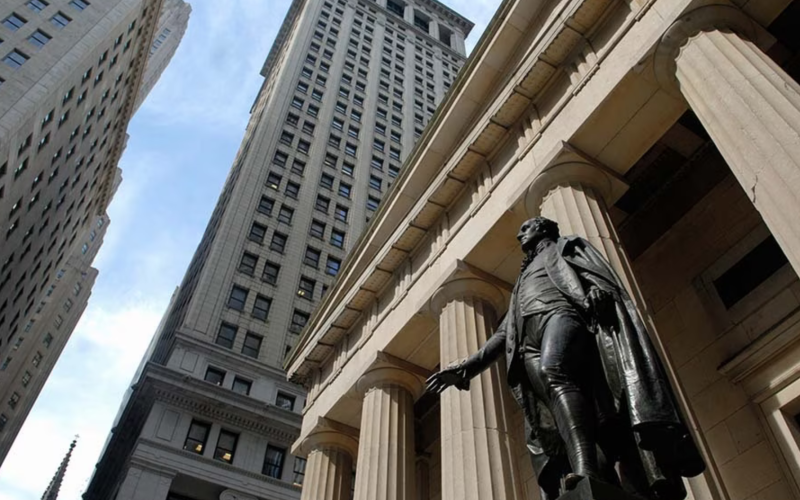by Collin Martin, Fixed Income, Charles Schwab and Company Ltd.
Corporate bond investors may be wondering if banking sector turmoil will affect financial institution bond issuers. Here's what to know now.
Corporate bond investors may be wondering if this is something they should be worried about. We continue think that most large U.S. banks are well-capitalized, while liquidity concerns appear to be less of an issue given the Federal Reserve's new term funding program. Bank earnings growth may be challenging in the near term, but that may be more of an issue for their stocks than for their bonds.
- Bonds issued by financial institutions do make up a large share of the investment-grade corporate bond market, but that doesn't change our guidance. Bank bonds tend to have higher average credit ratings than the average investment-grade borrower, but there are still risks, of course. Bonds issued by smaller banks and that have low credit ratings, like in the "Baa/BBB" area,1 might be one segment to keep an eye on, if you're an investor who holds individual bonds.
- Preferred security prices are likely to remain volatile, as the market is dominated by financial institutions, but investors who are willing to take additional risks and can ride out some volatility can still consider them to earn higher income.
Bank bonds in the investment-grade corporate bond market
Financial institutions make up a large share of the investment-grade corporate bond market

Source: Bloomberg, as of 4/17/2023.
Sector weights of the Bloomberg U.S. Corporate Bond Index (LUACTRUU Index) using the various sector-based sub-indexes. Percentages may not add to 100% due to rounding.
The Bloomberg U.S. Corporate Bond Index has various sub-indexes for each sector. For example, one sub-index is the Bloomberg U.S. Corporate Financial Institutions Index , and it comprises a number of sub-industries:
- Banking
- Brokerage, asset managers, exchanges
- Finance companies
- Insurance
- Real estate investment trusts (REITs)
Banking bonds make up the largest share of that financial institutions index mentioned above, with a 69% weight. Many of the large U.S. banks have relatively high credit ratings compared to the rest of the investment-grade corporate bond market. A concern over the years has been the growth of the "Baa/BBB" rated part of the corporate bond market, which now make up 49% of the Bloomberg U.S. Corporate Bond Index.
That's not as much of an issue with financial institutions bonds, as the table below illustrates. The average credit rating of the financial institutions index is A2/A3, meaning somewhere between the A2 and A3 rating on the Moody's Investors Service credit-rating scale. Only two other sectors have ratings that high. It's also higher than the average rating of the broad index.
Financial institution bonds have higher average ratings than the broad index

Source: Bloomberg, as of 4/17/2023.
Chart uses the sector sub-indexes of the Bloomberg U.S. Corporate Bond Index.
Looking more closely under the hood, we found:
- The 20 largest issuers by weight collectively make up 55% of the Bloomberg U.S. Corporate Financial Institutions Index.
- Of the top 20 issuers, all but two have ratings of A3 or higher, according to Moody's.
- Most of the top issuers are very large banks, with 15 of the 20 issuers having more than $1 trillion in total assets.
Given the recent bank failures, concerns were generally centered around small- or mid-size banks, but they generally represent a small percent of the overall corporate bond market. The table below provides the seven largest issuers by weight in the index, along with total assets and Moody's rating, strictly for illustrative purposes.
The largest issuers in the financial institutions index have ratings of A3 or higher

Source: Bloomberg, as of 4/13/2023.
The table includes the 7 largest issuers in the Bloomberg U.S. Corporate Financial Institutions Index (I00159US Index) using the Bloomberg’s Portfolio & Analytics function (PORT). All names and data shown above are for illustrative purposes only and are not a recommendation, offer to sell, or a solicitation of an offer to buy any security.
Corporate bond market reaction
The average option-adjusted spread of the Bloomberg U.S. Corporate Financial Institutions Bond Index rose by 65 basis points2 in just one week in early March, rising to 1.63% on March 15th, the highest level since the early stages of the pandemic. The broad corporate bond index only rose 43 basis points over the same time frame.
The average spread of roughly 1.6% for financial institutions bonds suggests that risks are still elevated. For half of 2020 and all of 2021, those spreads were lower than the broad market, but now that relationship has switched. The elevated spread suggests that risks are up, but the recent decline suggests that the markets aren't necessarily flashing too many warning signs.
Financial institution bonds now offer higher spreads than the Bloomberg U.S. Corporate Bond Index

Source: Bloomberg, using weekly data as of 4/17/2023.
Bloomberg U.S. Corporate Bond Index (LUACTRUU Index) and Bloomberg U.S. Corporate Financial Institutions Bond Index (I00159US Index). The option-adjusted spread (OAS) is the measurement of the spread of a fixed-income security rate and the risk-free rate of return (e.g., a corporate U.S. Treasury security), which is then adjusted to take into account an embedded option.
At the end of March, Standard and Poor's affirmed the ratings of the four large U.S. banks, but did downgrade the outlooks to stable from positive. However, S&P's rating affirmations and stable outlook "reflect our view of the credit resilience and favorable performance of these banks, including through the recent volatility." 5
Finally, the Federal Reserve's recently launched Bank Term Funding Program (BTFP) is good news for the banking sector, as well, as it allows banks to borrow against the par value of the high-quality collateral, not the market value, providing liquidity to meet deposit outflows if needed. After borrowings rose after the program's launch, they actually declined in the week ending April 12th, potentially a sign that liquidity needs are abating.
Preferred security update
Preferred security prices have rebounded after falling sharply in March

Source: Bloomberg, using daily data as of 4/17/2023.
Past performance is no guarantee of future results.
Banks and other financial institutions are large issuers within the preferred security market, representing more than 85% of the issues in the ICE BofA Fixed Rate Preferred Securities Index. Most preferreds issued by U.S. banks are perpetual preferred stock, which rank below the issuers' traditional corporate bonds and whose dividends are considered discretionary. That's a key risk with preferreds—if an issuer wants to preserve cash, it can suspend its dividends without triggering a default the way a missed bond payment would.
While our recent guidance on preferreds still holds, there could be pockets of risk with specific preferred issues and issuers. The preferred security market can't be painted with a narrow brush. We suggest investors focus on highly rated preferreds, like those with investment-grade ratings or whose issuers have investment-grade ratings for their senior unsecured debt. (Because preferreds often rank below traditional corporate bonds, the rating of a preferred may be lower than the rating for the same issuer's bonds.) The risk of dividend suspension, or simply the risk of more volatility, is likely higher with junk-rated preferreds or preferreds that have no rating at all.
What to do now
We continue to have a favorable outlook on the broad investment-grade corporate bond market, and the banking concerns have not changed that view. With average yields of 5% or more, they appear attractive for investors with low to moderate risk tolerances.
Preferred securities may experience heightened volatility in the near term and may be considered for investors who do have a greater tolerance for risk and are willing to ride out the ups and downs. We still prefer them to high-yield bonds today, but their prices could fall modestly if banking sector concerns remain.
Footnotes:
2 Basis points are a unit of measure used in finance to describe the percentage change in the value of financial instruments or the rate change in an index or other benchmark. One basis point is equivalent to 0.01% (1/100th of a percent) or 0.0001 in decimal form.
3 Source: Moody's, "Outlook changed to negative on rapidly deteriorating operating environment," March 13, 2023.
4 Ibid.
5 Source: Standard and Poor's, "Outlooks On Four Large U.S. Banks Revised To Stable From Positive On Uncertain Operating Conditions; Ratings Affirmed," March 31, 2023.
Copyright © Charles Schwab and Company Ltd.













